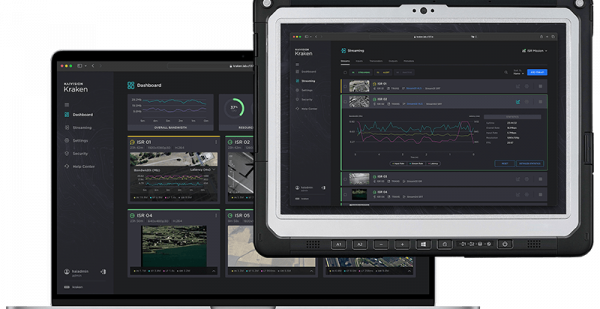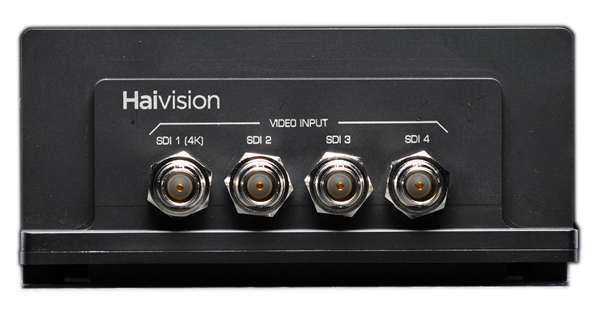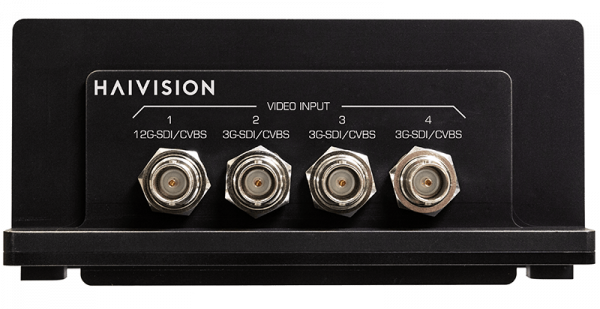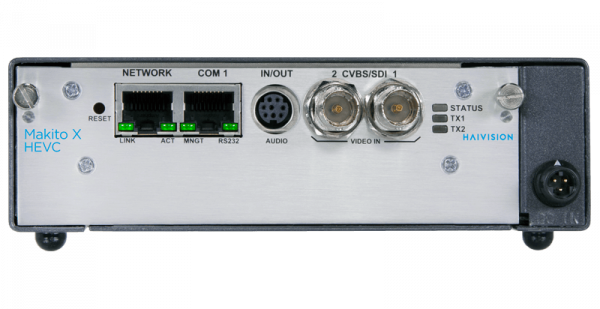Every single year there are advancements made in video streaming technology. So what should you be paying attention to in 2018?
We asked three people who’ve been in the video streaming industry for many years about what they think are the main trends to keep an eye on in the upcoming year. What will be the big advancements, and what should those who are involved in video streaming technology be doing to help make the industry better?
Let’s take a look at what our pundits had to say, and what they think we should all be paying attention to in 2018.
Look for pushes in AI, metadata, and video streaming micropayment options
Marc Cymontkowski is the senior director, core technology at Haivision. He has been developing video streaming tech since 1999, and was instrumental in creating SRT and helping it to go open source. And there are three areas he thinks we should be paying attention to in 2018.
First, he believes there will be a great push towards using AI to further enhance the quality of video on demand (VOD) and live video streaming.
Accelerators and hardware are expensive. A way around this may be to send uncompressed video through an AI engine, Marc says. In fact, a team at Carnegie Mellon has developed something called “model predictive control” (MPC), which predicts changes in network conditions, and then optimizes based on the model it creates.
At MIT, they’ve created a neural network to improve video streaming. Dubbed “Pensieve,” the AI system “uses machine learning to pick different algorithms depending on network conditions,” according to an MIT News article. This allows them to deliver higher-quality streaming experiences that do not buffer as much as many existing systems.
While other technologies like our own Network Adaptive Encoding are already reacting to bandwidth fluctuation, the current AI research is still in its infancy.
The bulk of the research now focuses on VOD right now, but AI could, at some point, be used in live scenarios. Watch for it!
Next, Marc is looking at paying more attention to metadata. Crucial to helping viewers — and those who use video as resources like editors and archivists — to find exactly what they’re looking for, there should be a major shift towards enabling metadata in much deeper and meaningful ways in the coming year.
Interestingly, AI could also help to solve the problem of making metadata more readily available. When dealing with rich content like video, AI will be a big help in ensuring that all available metadata can be parsed. This could even include video image recognition that could go as far as being able to recognize emotions in people on videos, and allow people to search based on that criteria.
Moreover, “AI improves finding and organizing unstructured digital content, whether that is professional video, digital surveillance video, health and genomic data or engineering and scientific content. AI can be used for intelligent allocation of content into a storage hierarchy depending upon the probability of need,” according to an article on Forbes.
As Marc says, “Content is good, but if you don’t know where it’s from, it does no good.” Enabling those who work with video to be able to perform more precise searches in order to find what they’re looking for will be a major boon to the industry.
Finally, Marc predicts we will see a move towards blockchains for video streaming micropayments.
A model in which viewers can use cryptocurrency to pay only for the content they consume — as opposed to monthly or yearly subscriptions — would benefit both the viewer and the business.
For any online business, security is key. Security in blockchain tech is robust, to say the least. This would give more businesses the confidence they need to get into the industry, and also be assured that they’re able to keep their consumers’ payment information safe and secure.
And for viewers, micropayments allow them to only pay for what they’ve watched. Not interested in watching anything that month? Don’t pay for it.
For the time being, Marc is willing to watch those who are investing in this technology, and we’ll all keep an eye out for advancements in AI, metadata, and blockchains for video streaming payments.
Focusing on making codecs perform better in 2018
Mahmoud Al-Daccak is Haivision’s EVP of product development, and CTO. He’s been developing technology for the past 25 years, and has been at the forefront of a lot of great advancements in video streaming.
Mahmoud and I started our conversation by discussing codecs — the movement from MPEG-2 to H.264 and then to HEVC.
Mahmoud is quick to note that, despite the advancements made in those codecs, the compression fundamentals have not changed at all. What has changed is that new codecs are equipped with added tools and complexity. And we can add those new features because of the processing power now available to us.
For example, the processing of HEVC takes 5-6 times the amount of processing power as it did for H.264. But our codecs are getting more efficient: we are able to achieve ever increasing quality at the same bit rates, or maintain similar quality at reduced bit rates.
So, the focus for 2018, according to Mahmoud, is not just the codec, but how you can help the codec to do a better job.
One example might be dealing with high-frequency noise coming into your stream. You might be able to implement certain intelligent or “smart” filters to remove that. That will enhance the quality of the image tremendously for any codec.
There are a lot of clever things that can be done. One idea that Mahmoud suggests include smart filtering on the raw image that will help the codec to perform more efficient encoding, while at the same time preserving the perceptual quality so that the end result is high-quality viewing.
You could also add smart object classification, leveraging AI to identify these objects and treat them according to their importance.
If you can recognize faces, for example, you can focus your “encoding budget” on the faces. If you can recognize text, you can make sure that the encoding doesn’t lose the quality of the text. When you start doing smart classification, and you feed that as metadata pointers to the codec, then the codec can do a much better job.
From a quality point of view, all of us invested in streaming technology will do a better job by focusing on helping codecs get better and better in 2018, and make sure that the end result is the highest possible quality for consumers.
How 2017 is influencing the next big video streaming technology advancement in 2018
Peter Maag is the CMO at Haivision and has been here for 13 years — since the very beginning.
Peter is always looking to the future. Before 2017, he knew that without wide adoption, Haivision’s SRT technology would have a limited future. Seeking partnerships heading into 2017, he was wrapped up in understanding licensing possibilities across all of the applications for video streaming from “big iron” broadcast contribution to large volume consumption on soft players, mobile devices, and set top boxes.
During 2017, the realities of a rapidly changing market led the Haivision team to investigate open sourcing the SRT technology and, in April 2017 at NAB, we placed the source code into Github and started the SRT Alliance to foster adoption.
And wow — off the scale adoption. Nearing the end of 2017 there are now over 70 companies who are publicly endorsing the technology and countless others who have the code in trial or use. SRT is well on the way to replacing RTMP for streaming to CDN uplinks and replacing boutique technology across the core of the broadcasting world.
The engineers at one of the SRT Alliance members, a major broadcast solutions provider, told Peter how “proud” they were of Haivision’s “courage.”One can only wonder if in 2018 technology vendors will recognize trends, realities, opportunities, and blend them with their own technology in support of open source efforts.
“Highways” should be free — how you use them to solve your customer’s problems is what matters.
Like the rest of us at Haivision, Peter is very proud of our 2017 and making one of the most significant contributions to our industry ever, and looking forward to what we can disrupt in 2018.
The best of video streaming is yet to come
Whatever your thoughts on what’s coming up in the next year for video streaming technology, you can be sure that the best is yet to come. There have been so many great developments that have happened just here at Haivision over the last year, including the launch of open-source SRT, and we know that there are a lot of people working hard to ensure the future of our industry, both here and elsewhere.
Here’s to an amazing 2018, and we’ll be back with another round of predictions next year. Stay tuned!



























